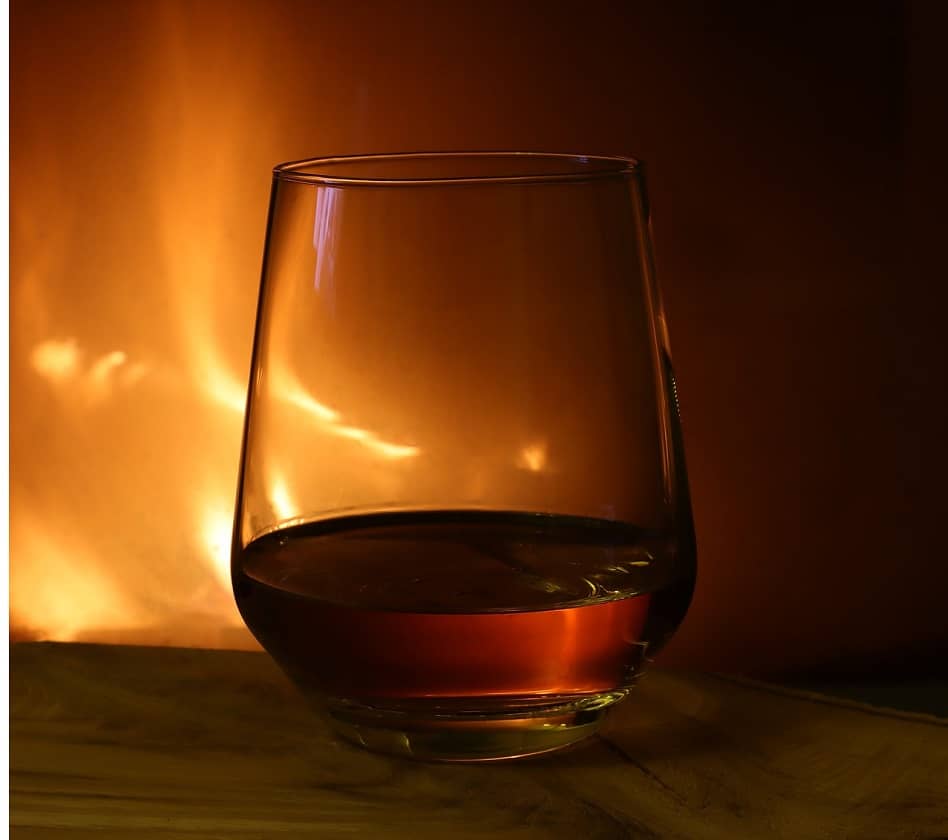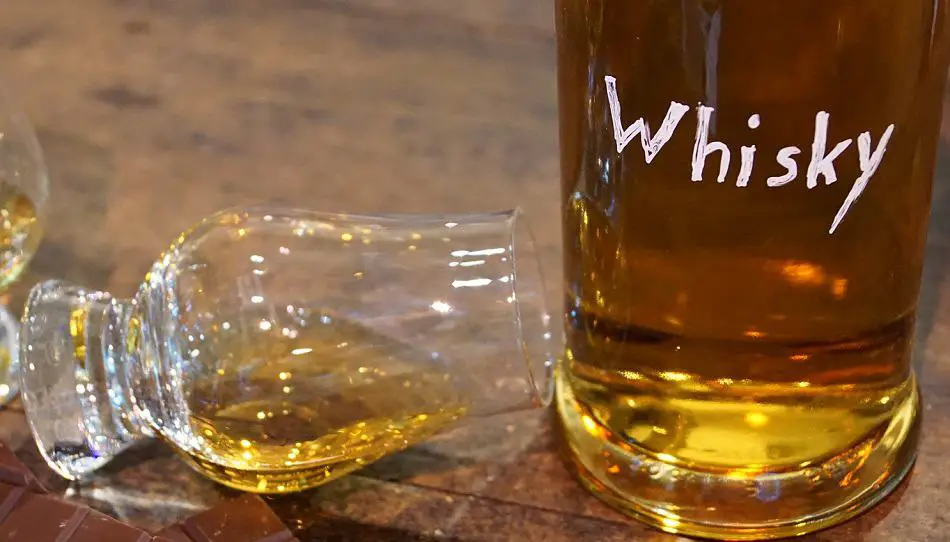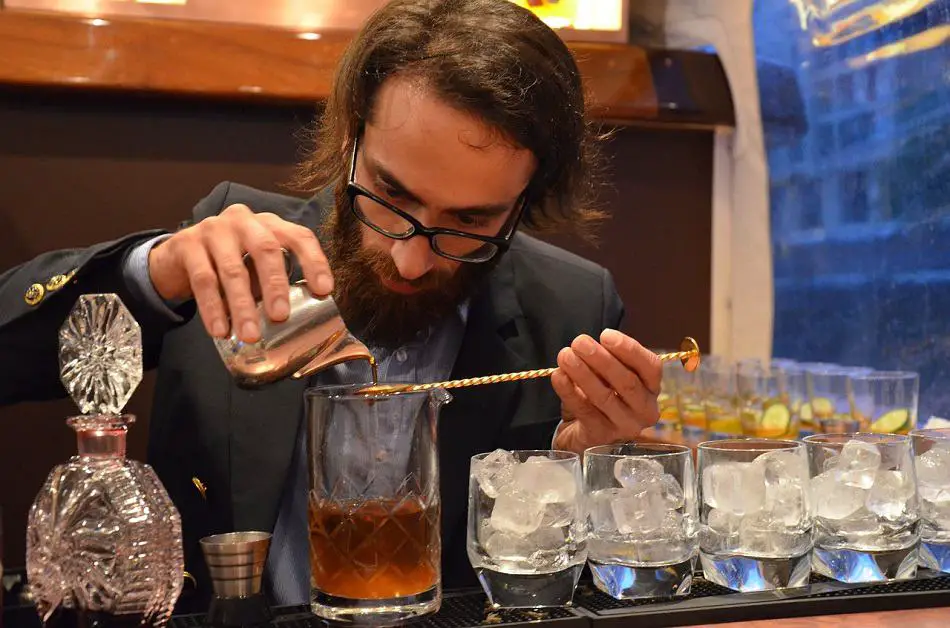It’s very unlikely that your whiskey will go bad, but it’s not impossible. Higher temperatures affect a lot of things so it’s reasonable to wonder whether whiskey is one of them. That’s why I decided to look into whether whiskey goes bad in the heat.
Slightly warmer temperatures will not affect whiskey at all. Higher levels of heat will cause a whiskey’s flavors to change, in some cases making the whiskey go bad but in others, only making the whiskey taste different, which in older, more expensive or whiskeys that you bought for its specific flavors, will be a bad thing.
There are actually two ways heat can make whiskey go bad: oxidation and evaporation and we’ll look at both. If the heat has made your whiskey go bad, while this change is irreversible, there are things you can do to salvage your whiskey. And just like whiskey can go bad in the heat, it can also go bad in the cold.

Why Whiskey Is Highly Unlikely to Go Bad in the First Place
To start off with it’s useful to know that ordinarily, whiskey doesn’t go bad. This is because whiskey gets its flavors from the casks in which it’s matured, so once it’s bottled it can’t continue to ‘age’ and eventually deteriorate. Additionally, a whiskey’s flavors are protected by the high alcohol content (between 40%ABV – 68%ABV) which freezes the esters, congeners (which provide most of the flavors) and volatile alcohols in a type of suspended animation, preventing them from going bad.
This is in contrast with wine that continues to age even in a sealed bottle, and within about five years (for most wines, unless they’re of a very high quality) will pass its expiry date, deteriorate (because the average AVB of wine is only 11.6% so the alcohol won’t help preserve it) and turn into vinegar.
The upshot of all this is that whiskey is not like other food or drink which can go bad relatively quickly. Barring any freak occurrences or you doing something absurd to your whiskey, it’s highly unlikely to go bad.
Why Whiskey Can Go Bad in the Heat
Heat, however, can make whiskey go bad via oxidation or evaporation. Here’s how.
How Heat and Oxidation Make Whiskey Go Bad
When whiskey becomes hot it expands and can come into contact with the cork sealing the bottle. Since whiskey has, as already mentioned, a 40%ABV or higher, constant contact with that level of alcohol will damage the cork causing it to decay and disintegrate.
Not only does this mean that the cork may crumble unimpressively all over the place when you open the bottle, it also means that you’ll have bits of wood in your whiskey. This is not very nice especially since they’re decayed pieces of wood.
More importantly, a damaged cork means a looser seal and oxygen seeping into the bottle leading to oxidation. This is when oxygen, which readily binds with lots of chemical compounds, turns them into other compounds. Therefore, when you add oxygen to whiskey new compounds are created and the flavors will be drastically altered.
How the taste of your whiskey will change can’t be predicted. It may turn your whiskey into a better one, but it may ruin your whiskey and make it go bad, so you’re probably better off not taking the chance. Let’s put it this way. When you add oxygen to iron you get rusting and when you add oxygen to copper you get corrosion. On the basis of pessimism, it’s very likely that being too hot and becoming oxidized will make your whiskey go bad.

There’s also the possibility that the flavor alteration caused by the heat and oxidation combination, may make your whiskey not better or worse but just taste different. This is not as bad as your whiskey becoming ruined and actually going bad, because at least you have a drinkable whiskey. On the other hand, if it was an 18-year-old, $250 bottle of whiskey with fantastically delicious flavors that now only tastes as good as a 3-year-old $50 bottle of whiskey, you’ll probably consider your whiskey to have gone bad. By about $200.
How Heat and Evaporation Make Whiskey Go Bad
This should come as no surprise, but heat causes liquid to evaporate and the more heat the more of the liquid evaporates. This means that when heated, some of the whiskey in the bottle will evaporate.
The first problem with this is that the amount of whiskey in the bottle will be reduced in a way other than being drunk.
The second problem with this is as follows: Since alcohol evaporates at a lower temperature than water (alcohol at 78°C / 172°F and water at 100°C / 212°F), more alcohol will evaporate than water. This means that evaporation causes the alcohol level of a whiskey to be reduced.
Now this is not necessarily a bad thing. Less alcohol means it won’t overwhelm the taste of the whiskey and that the whiskey’s flavors can open up. We add water and ice for this reason, only they reduce the alcohol level by diluting the whiskey with water, whereas heat reduces the alcohol level because of the difference in the rate of evaporation between alcohol and water.
On the other hand, just like too much water and ice will dilute your whiskey too much and ruin it, too much heat and evaporation will do the same. While heat and evaporation change the taste of your whiskey, at first making it smoother and more flavorful, too much of this will overdilute the whiskey making it lose some of its flavors.
And once again if you have a special bottle of whiskey whose flavors you want to keep intact, you’ll consider even small amounts of heat and evaporation changing the alcohol to water ratio and therefore the flavors in an indeterminable way, something that makes whiskey go bad.
More Heat Means More Changes Happening Sooner
Of course, the greater the heat and the longer the whiskey is exposed to it, the more the oxidation and evaporation, the quicker the whiskey will go bad and the worse it will become.
Some changes can occur from as early as 12 hours of exposure to high levels of heat while other changes can take years. Sometimes whiskey that has only been exposed to medium levels of heat is still okay after 2 weeks. It all depends on exactly what happened to your whiskey.
Keep Your Whiskey Away From the Heat
The takeaway here is to keep your whiskey away from the heat and in a cool, temperature-controlled room. 15°C – 20°C / 59°F – 68°F will do.
Cellars, that are dark with only a minimum amount of heat and a room temperature of 15°C – 18°C / 59°F – 64°F are perfect, though I’m not sure the majority of us have a cellar or a temperature-controlled room – probably because we spent our money on buying whiskey and will just have to settle for somewhere cool.
What to Do if Your Whiskey Has Gone Bad in the Heat
If the heat has caused your whiskey to go bad there’s nothing you can do to reverse the situation. The oxidation and evaporation caused by the heat has permanently altered the flavors of your whiskey and whatever has evaporated is gone for good. But that doesn’t mean you should throw the whiskey out as there are several things you can do to salvage it:

1. See if Your Whiskey Is Still Drinkable
If the heat has caused your whiskey to go bad in the sense that it is now ruined then skip to the next two sections, but if the heat has caused your whiskey to go bad in the sense that it doesn’t taste like it’s supposed to, then your whiskey will still be drinkable. It may not be the same as it was before, it may taste different, but you don’t have to throw it out. It may even taste better.
If it was that 18-year-old, $250 bottle of whiskey with specific flavors you enjoy it may also still be drinkable. Yes, you’ll be annoyed that the whiskey has been ruined because it was supposed to taste better but if it still tastes ok then there’s no reason to throw it out.
Unless you have a second 18-year-old, $250 bottle of whiskey with specific flavors you enjoy that hasn’t been left in the heat.
2. Mix It With Other Whiskeys
After all, that’s what the distilleries are doing. Many blends are a mixture of several by-themselves-not-so-fantastic-tasting whiskeys, and they come out quite nice. Yes, you may not be a master blender with skills honed from years of practice and able to create a fantastically flavored whiskey, but if you have a couple of whiskeys that are not that great by themselves you can’t really go wrong.
You may want to do more than just throw your damaged whiskey together with a couple of others, like testing different proportions of the various whiskeys in your arsenal and balancing out bitter flavors with sweeter ones, but with a bit of experimentation you could turn what you have into something better.
3. Re-Age Your Whiskey
Whiskey gets most of its flavor by being aged in a barrel. Once out of the barrel it stops aging and can’t get any more flavors, but there’s no reason you can’t restart the process especially for whiskeys whose flavor needs some repair.
There are two ways to age whiskey yourself and give whiskey that’s gone bad more flavor.
The first is by adding oak wood sticks to your whiskey. When the temperature rises the wood expands and the whiskey is absorbed into the wood. When the temperature falls the wood contracts, and the whiskey is expelled. Just like with barrel aging, the flavors in the wood are transmitted to the whiskey.
You can find oak wood sticks on Amazon here.
The second method of aging your own whiskey is by purchasing your own barrel and letting your whiskey mature in it for a while, essentially doing exactly what distillers do. While usually the aging process takes professionals years and costs them a lot of money, you can do it yourself in a far shorter amount of time and relatively inexpensively.
You can find oak aging barrels on Amazon here.
As a rule of thumb, one oak stick will age one 750ml bottle of whiskey in one week by about five years, a one-liter barrel will take no more than a few weeks to age and a ten-liter barrel will take only a few months.
The reason why this is far quicker than the usual three years or decades that distillers take, is because you’re using a much smaller barrel, so the amount of wood touching the whiskey will be four or five times higher than in normal maturation where a standard 53-gallon barrel is used, and more flavor will be imparted to the whiskey at one time.
I have written a more detailed guide about aging whiskey yourself, which you can read here.
If you don’t like any of these options, or you just want the original flavors of your whiskey, then you’ll have to buy a new bottle, which you can do at Tipxy.com here (affiliate link).
(affiliate link).
Why Whiskey Can Go Bad in the Cold
You may have thought that since whiskey can go bad in the heat it would be a good idea to keep it in the cold. However, you’d be wrong because the cold can make a whiskey go bad too, by muting its aromas and flavors.
It’s all because of the whiskey’s flavor molecules, which when cold, are prevented from evaporating. This means there will be no whiskey aromas to smell, and because flavor is a combination of taste and smell you won’t get all the flavors either. However, at room temperature, the flavor molecules will evaporate. You’ll be able to smell the aromas and therefore pick up all the flavors from your whiskey.
Which is why, unlike heat, cold doesn’t change a whiskey’s flavors permanently. If your whiskey is cold and you can’t taste its flavors there’s no need to throw it away, mix it with other whiskeys or re-age it. All you have to do is wait for it to return to room temperature and the flavor molecules will evaporate and ‘unmute’ the whiskey’s aromas and flavors.
